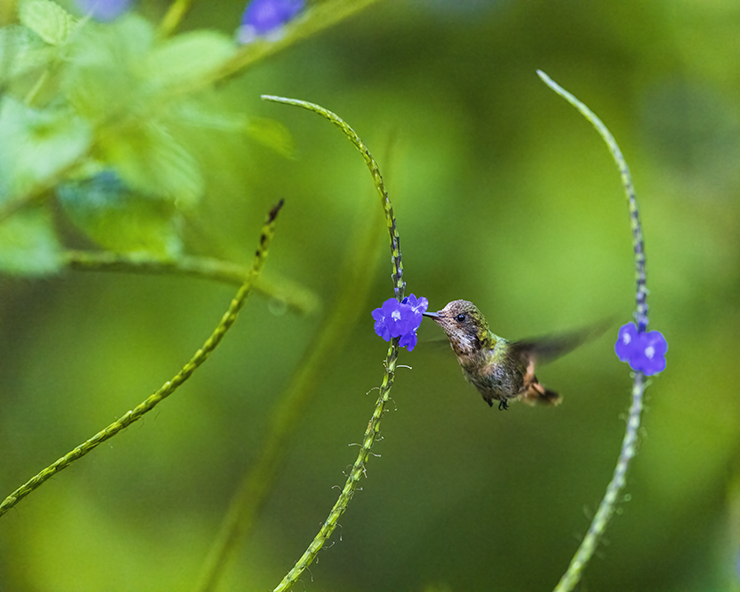
Today marks International Women’s Day 2023, a globally-observed day of drawing attention to many of the issues women still unfortunately face. We cast our thoughts both on the ills of our far-too-often depraved society as well as the many achievements and milestones accomplished by women. I am here to write on birds, however, and I shall bat in my crease as the cricketers say.
As a commemoration of this day, however, I do wish to share snapshots of several recent encounters I’ve had with female birds over the last couple of weeks. Regular readers would know by now that I hardly ever go searching for birds – but some days ago I (finally) twitched a lone Eastern Wood-Pewee. It was the first record of this species in Trinidad & Tobago and looks almost identical to our regularly seen Tropical Pewee. After not even an hour in position, I noticed a flycatcher hunting about twenty metres away. My colleague played the dawn song of this species and after a couple minutes it responded with vocalisations of its own. I’m not one for using playback but for a situation such as this where the identification of the species is in question, judicious use is fine. The bird sang for a short while then fell silent, preening in the sunlight – albeit high in the canopy.
I didn’t intend on spending a lot of time birding that morning, as a method of insuring this I didn’t pack breakfast. Just as I was about to pack the car I heard a strange call from the foliage above my vehicle. I had never heard this sound before, but it was undoubtedly emanating from a bird somewhere! A few seconds of searching revealed a stunning yellowish bird – a beautiful Summer Tanager. Previously I had only seen this species twice, and both were males. The most recent of those sightings was a backyard twitch during strict lockdown in 2020.
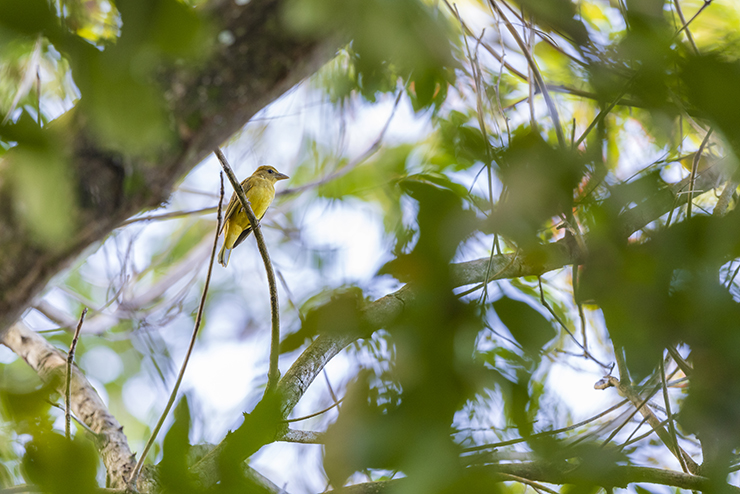
Summer Tanager
On a boating trip to an island sanctuary on the east coast of Trinidad, we were treated to excellent views of three species of kingfisher. I’m thinking of repeating this trip specifically for kingfishers, in fact! While we saw both sexes of Green Kingfisher, it was the queen who posed most kindly for pictures.
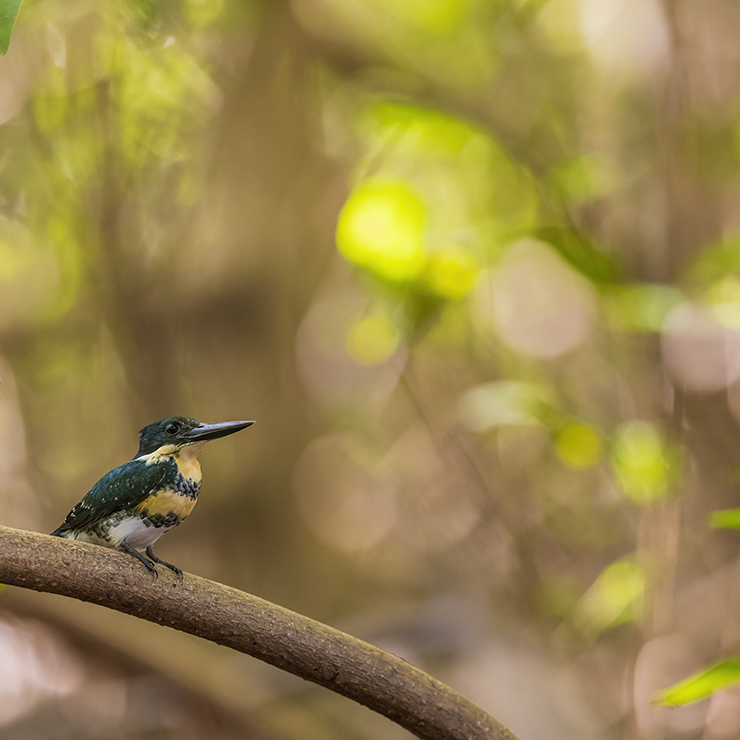
Green Kingfisher
While out with some close friends on an early morning mission to southern Trinidad, we enjoyed sightings of various forms of yellow-inspired birds. From Masked Yellowthroat and Yellow-chinned Spinetail to Yellow-hooded Blackbird and Yellow Oriole, we chuckled consistently at the preponderance of yellow in the marsh. The laughter paused while we tried to keep our lenses on a Yellow Warbler, though.
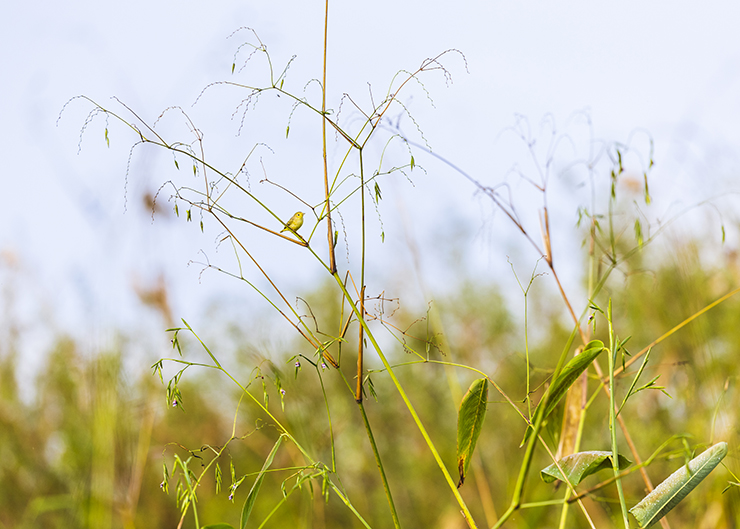
The solid, chalky yellow of a female Yellow Warbler distinguishes her from the boldly streaked male. There are differences in behaviour as well, but both are notoriously restless.
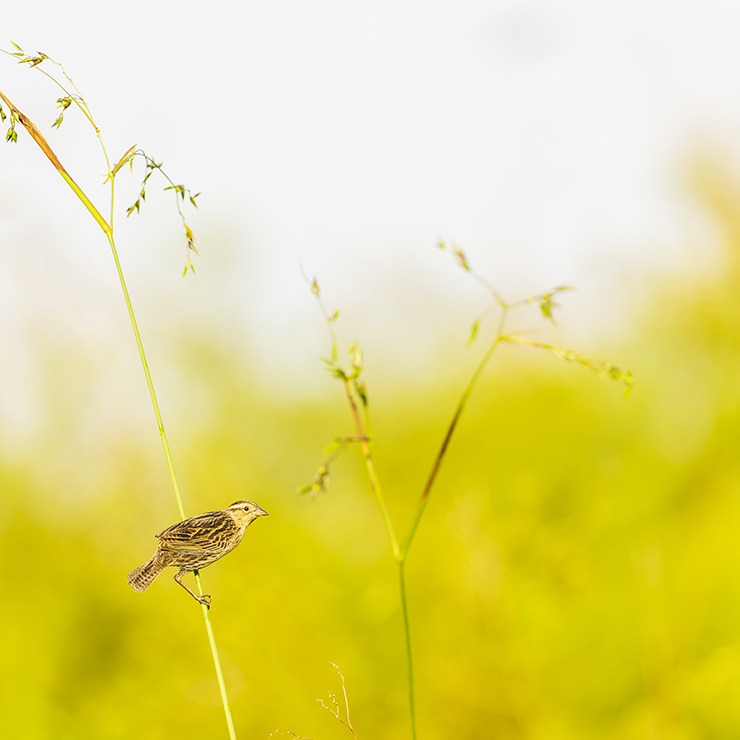
Also in the mix (and in strong opposition to the theme) were several Red-breasted Meadowlarks. Females lack the strong black and red plumage of the male but are considerably more ornate and in my opinion, more interesting to look at.
Some days ago, I was supposed to guide a couple persons within a local park. Taking the opportunity to get some birding in at the crack of dawn, I was treated to a flurry of activity at a fruiting ficus tree. It was almost sensory overload! The calls of a couple Rufous-tailed Jacamars eventually prised me away from that tree, and although they were hidden within a thicket, I knew they were very close. Patience always pays, and soon enough both birds flew out to a small, denuded tree. I watched as the male flew in circles above the female, she kept her eyes on him the entire time. She seemed flattered and suitably wooed from my unqualified perspective!
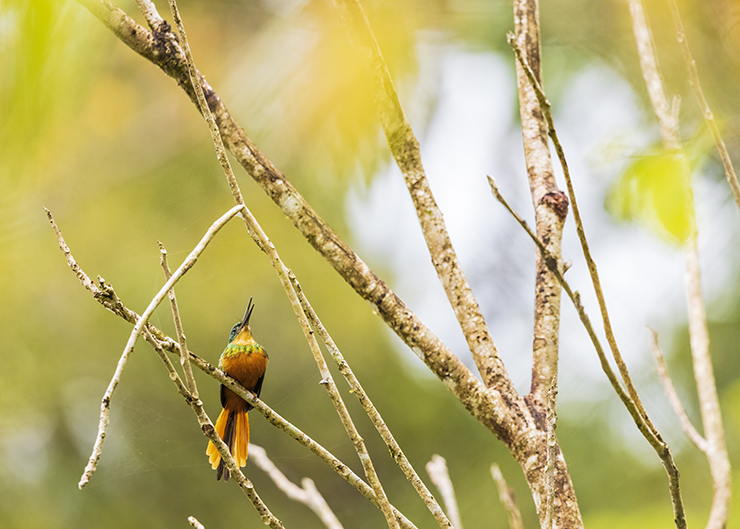
What do you think? She’s fanning her tail and calling back to him as he performs just out of frame.
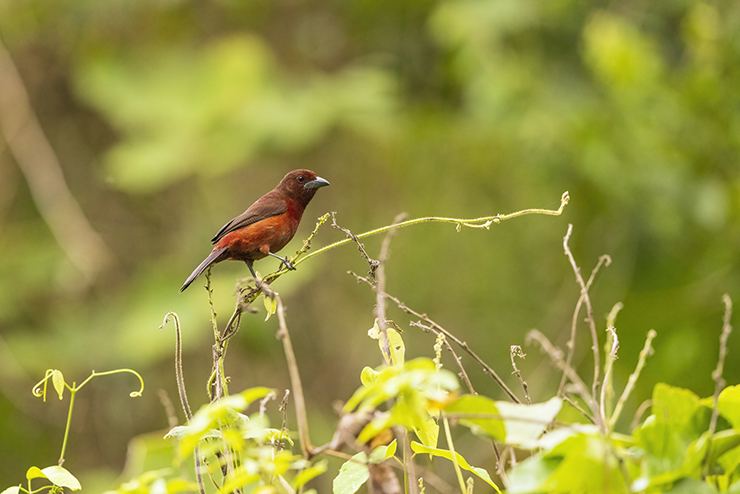
A short walk away from this spot yielded this amazing view of a female Silver-beaked Tanager feeding in the open.
Perhaps one of the most sought after birds in Trinidad is the extravagant Tufted Coquette. Folks sometimes trample each other for a view of the male – to the point where some specially request that an announcement of this species’ presence must be accompanied by a qualifier of whether the bird spotted is male or female! However, the demure beauty of the female cannot be denied. There’s something about her tiny round head set on that minuscule body, with gossamer wings and a tail that continually bobs up and down that makes her into just as much of a myth and legend as her male counterpart. While waiting for breakfast at a lodge in the forested hills of Trinidad’s Northern Range, I spent most of that time with this particular bird. Many times, she came too close for me to focus and I was forced to set my camera down.
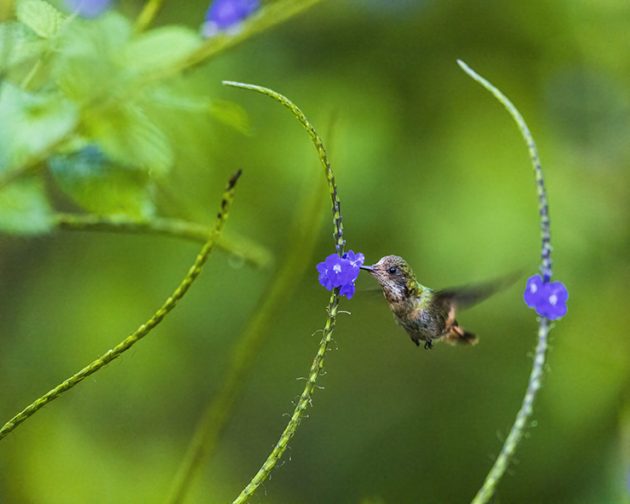
Tufted Coquette
Within ornithology and birding we are still tasked with restoring the balance, and we must continue to endeavour toward a space where all are appreciated, and all are loved equally and thoroughly.


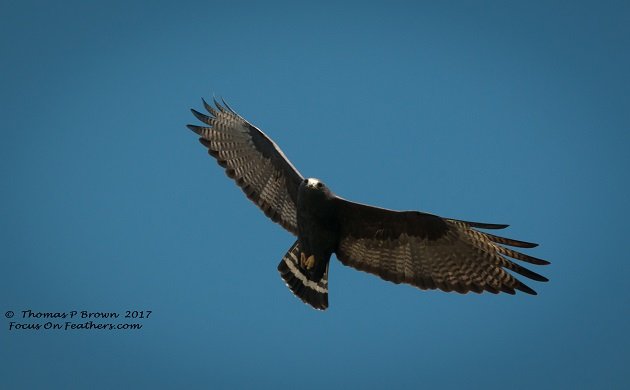
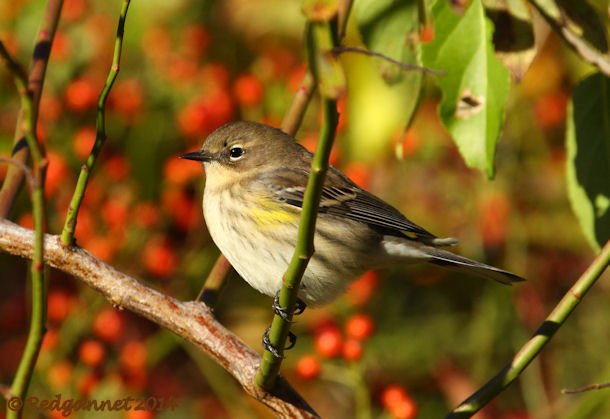

 New writers welcome – please contact us for details.
New writers welcome – please contact us for details.

















Leave a Comment